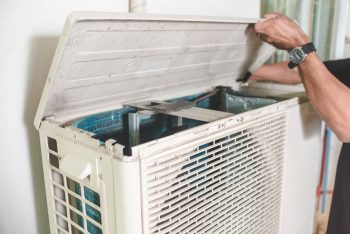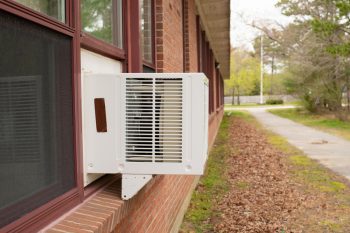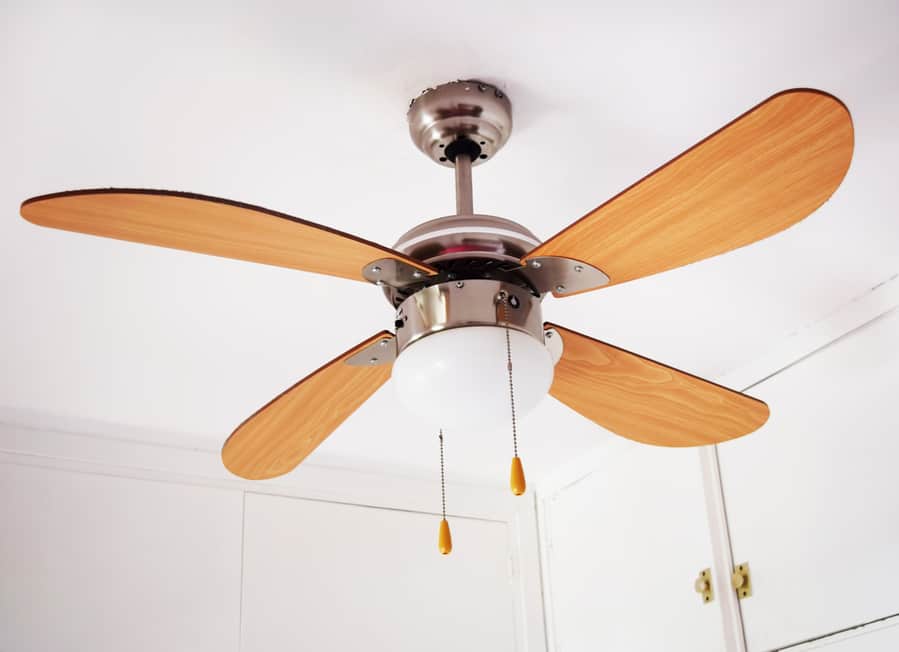
Sleeping in a stuffy room during the summer can cause many sweaty, sleepless nights. And if you don’t want to overwork your air conditioner and send your electrical bill through the roof, turning on the ceiling fan should keep things nice and comfy.
But is it safe to leave it on overnight?
Some people allege that leaving a ceiling fan on overnight could lead to overheating. They claim that the fan could become a fire hazard when this happens.
But how true are these allegations? Should you avoid leaving your ceiling fan on throughout the night? Here’s what you need to know.
- Ceiling fans are designed to run for extended hours and are unlikely to overheat.
- Despite the previous point, fans may still succumb to wear and tear over time.
- Keeping the fan at a low speed can help prevent any potential problems.
- Read the manual for maintenance and usage tips from the manufacturer.
- Try installing a smart ceiling fan switch to streamline controls.
It’s common for household appliances and electronics to have some usage limitations. Interestingly, however, fans were designed differently.
Here’s how you can use your ceiling fan without worrying about damages and hazards.
Can a Ceiling Fan Be Left Turned On Overnight?
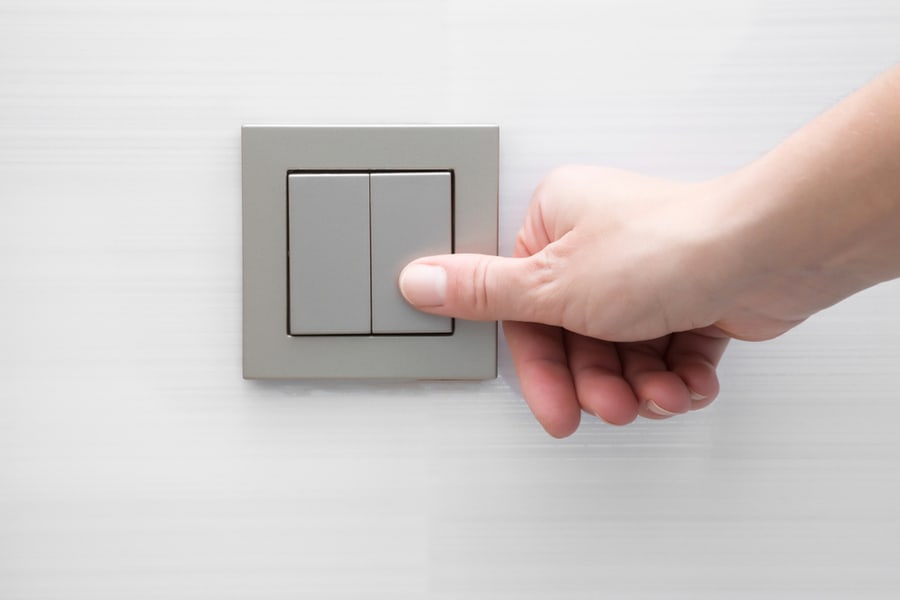
There’s no need to worry about overheating and fire hazards. Ceiling fans are designed to operate for long periods without producing too much heat.
Even low-cost fans can run for the whole day without repercussions.
The reason why some people believe that a fan might overheat is because of the moderate amount of heat it produces after a few hours of use. This heat is generated by the fan turning electricity into motion.
But even then, it’s only normal for a fan to produce some heat, and it’s unlikely to cause any potential threats to your safety.
And if that isn’t enough to dissipate your overheating fears, it’s worth mentioning that most modern fans have a thermal fuse that works to detect if the fan reaches dangerous temperatures.
The fuse will automatically shut down the power if the fan hits 260°F to prevent electrical fires and damage.
But that doesn’t mean you can leave your fan on willy-nilly. Ceiling fans – as durable and safe as they might be – still need rest periods.
Turning off your fan when not in use or giving it a few hours to cool down after being turned on all night can help prevent damage down the line.
How To Identify a Damaged Ceiling Fan
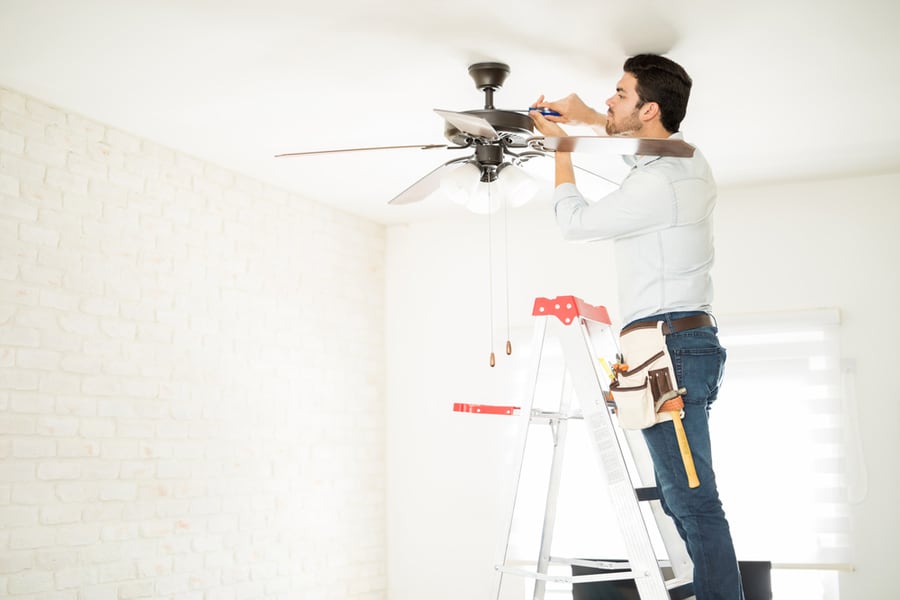
Like any other appliance, ceiling fans succumb to wear and tear over time. The constant rotation of its blades can cause functional problems down the line as its parts are subject to long bouts of use.
Wiring and other internal mechanisms may also degrade over time, causing issues in performance.
Some signs of a potentially damaged ceiling fan include:
- Humming noises
- Slow start
- Reduced fan speed and strength
- Needing to help the fan start-up by pushing the blades to turn
- Wobbling or other signs of imbalance
- Switches and pulls that don’t work (if the fan also has lights)
- Inconsistent blade speeds that change at intervals
Call a professional if you notice these signs when you turn on your ceiling fan. Do not attempt to keep using your ceiling fan if it’s showing obvious signs of damage.
Safety Tips for Using a Ceiling Fan at Night
1. Keep It at a Low Fan Speed

It’s tempting to max out the fan’s speed, especially on warm and toasty nights. But it’s not typically recommended that you use the highest setting when you’re going to sleep while it’s turned on.
Again, it’s not likely that your fan will run into any problems if you keep it on at night.
But placing it on the highest setting may overwork the motor and speed up the process of wear and tear.
2. Read the Manual for Maintenance Tips

Most manufacturers will add a chapter about maintenance in the ceiling fan’s user manual.
Although most of us toss the manual into the box and the box into storage, reading its contents can help improve your fan’s performance and service life.
Make sure to follow the manufacturer’s maintenance steps. Doing so won’t only maximize your ceiling fan’s lifespan but may also help protect your warranty.
3. Try a Smart Timer

If your ceiling fan doesn’t have a timer that can turn it off after a set time, you can try replacing its switch altogether.
Different electronics brands sell a smart fan switch that lets you set timers and control your fan from your phone.
Aside from speed control and scheduling, these smart switches also offer voice control. So in case, you need to turn off your ceiling fan in the dead of night, you won’t have to worry about interrupting your sleep and getting out of bed.
Conclusion
Your ceiling fan is a robust workhorse that’s not likely to succumb to damage, especially with proper care and maintenance. But even then, there’s no harm in practicing some safety precautions to prevent possible hazards during use.
Leaving a ceiling fan turned out throughout the night shouldn’t pose too much of a problem.
Just make sure to use and care for your fan responsibly, and you should be in the clear.
Frequently Asked Questions
How Many Hours Can You Leave a Ceiling Fan On?
Most manufacturers designate the limit at about 10 hours of non-stop use. After this time, you may have to give the ceiling fan a rest. But still, it pays to check the manual.
Some more advanced, expensive fans may be turned on for over 24 hours at a time.
Can a Ceiling Fan Overheat?
Yes, but not for the reason you might think. Keeping your fan turned on for extended hours isn’t likely to cause overheating.
On the other hand, poor wiring can lead to excess heat production and electrical failure.
When this happens, the wiring may spark and cause a fire. So although a ceiling fan may overheat and catch fire, it’s more likely to be caused by faulty wiring.


